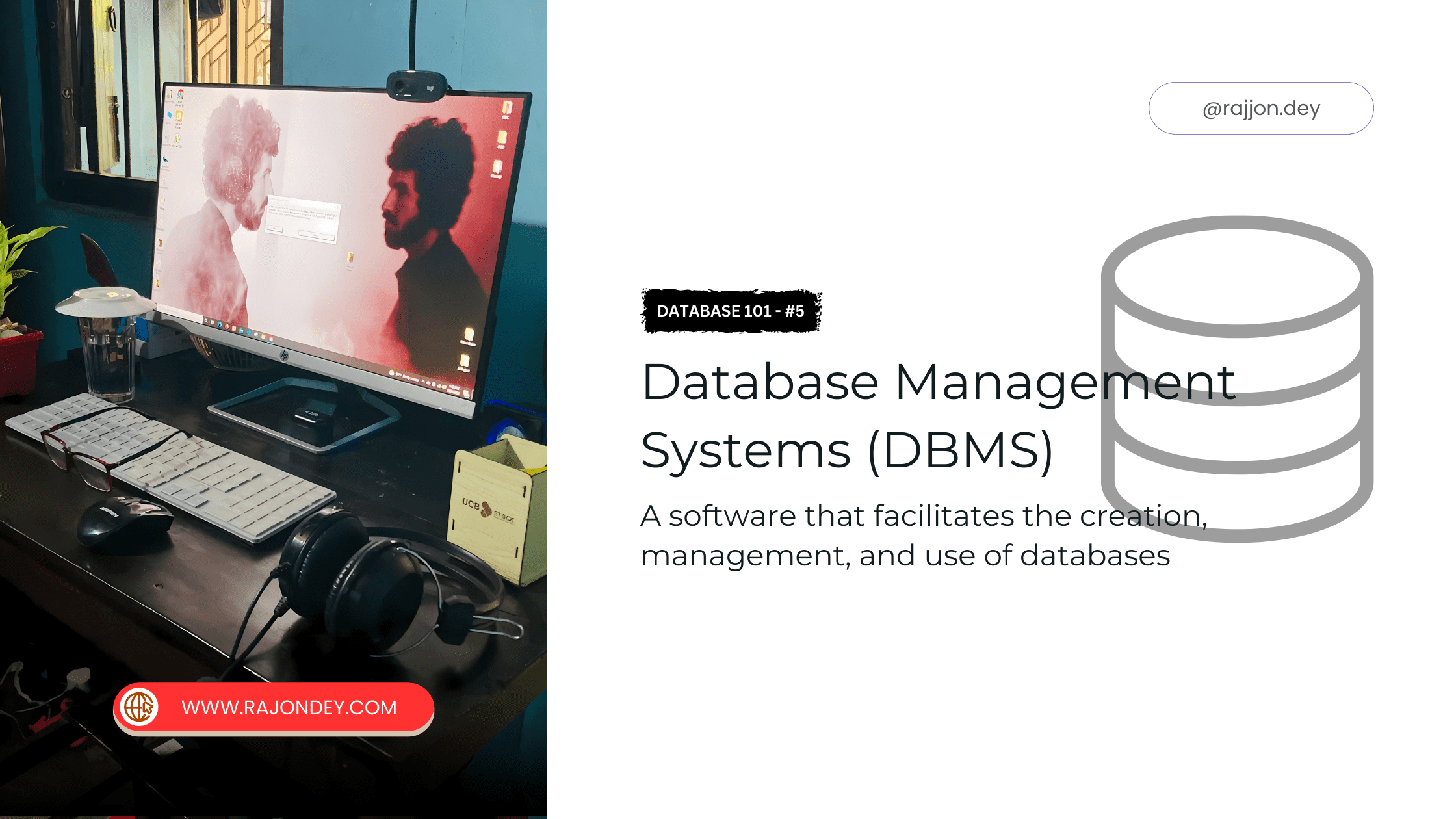Database Management Systems (DBMS)
 Rajon Dey
Rajon Dey
A Database Management System (DBMS) is software that facilitates the creation, management, and use of databases. It acts as an interface between users and the database, ensuring data is organized efficiently and can be accessed, updated, and managed as needed.
DBMS serves as the backbone of modern data-driven applications, providing mechanisms for storing, retrieving, and manipulating data while ensuring data integrity, security, and performance.
Functions and Features
Data Definition: Defines the structure of the database.
Data Manipulation: Allows adding, retrieving, modifying, and deleting data.
Data Querying: Supports querying to retrieve specific data.
Data Security: Ensures data protection and integrity.
Concurrency Control: Manages simultaneous database access.
Backup and Recovery: Provides data backup and recovery mechanisms.
Types and Examples
DBMS can be categorized into different types based on their data model:
Relational DBMS: Uses tables to store data. i.e. MySQL, Oracle, Microsoft SQL Server, PostgreSQL
NoSQL DBMS: Designed for distributed data stores. i.e. MongoDB, Cassandra, Redis
Object-Oriented DBMS: Supports storage of object data. i.e. ObjectDB, Versant
Hierarchical DBMS: Organizes data in a tree-like structure. i.e. IBM Information Management System (IMS)
Network DBMS: Uses a graph-like structure to represent data. i.e. Integrated Data Store (IDS)
DBMS offer essential functions for efficient data management and are crucial for modern applications across various industries and use cases.
Subscribe to my newsletter
Read articles from Rajon Dey directly inside your inbox. Subscribe to the newsletter, and don't miss out.
Written by

Rajon Dey
Rajon Dey
I'm a Software Developer, my passion is crafting smart, meaningful, and professional websites that enhance the online presence of individuals and businesses, making the web a more engaging, effective, and better platform. Get the data - https://developer-data.beehiiv.com/